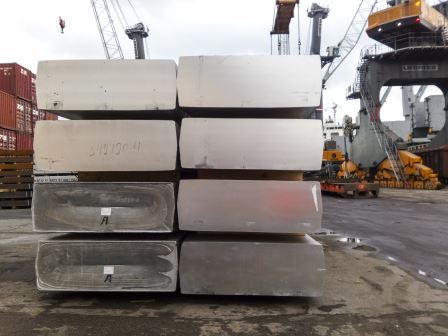Aluminium prices in the various markets hit fresh all-time highs in the first half of 2022 but lost heavily by the second half. China demand concerns, the Russia-Ukraine war, and a strong US dollar caused a topsy-turvy period for the second most widely used industrial metal in the world.
Unprecedented volatility has been witnessed in the metal for the last few years. In London Metal Exchange, from a five-year low of $1450 a tonne, the metal swiftly shot up to an all-time high of $4073 soon after Russia’s invasion of Ukraine in March 2022.
Prices later succumbed to a sharp correction as Europe’s energy crisis and the slowing global economy hit the demand prospects of the silvery-white metal.
A similar trend was witnessed in China’s Shanghai futures exchange and the domestic MCX as well.
However, the metal remains vulnerable amid hints of a possible ban on Russian aluminium by the US administration. There are reports that the US authorities are preparing to slap a 200 percent tariff on Russian-made aluminium as early as possible.
The move has been contemplated for months and aimed at ramping up pressure on Russia over its war in Ukraine and supporting domestic companies. Russia, the world’s second-largest aluminium producer has been dumping supplies on the US market below cost hampering American companies.
The US and its western allies have been taking continuous efforts to blunt Russia’s role as a global commodities powerhouse.
Meanwhile, Russia is the second largest aluminium producer and a significant source of material to US markets. Slapping such a steep tariff is expected to end the US imports from Russia. Since the metal is used to make everything from beer can to airplane parts, the US authorities should search for potential alternate supply in the event of a tariff hike.
At the same time, China’s production and consumption numbers are offering some strength to the commodity. China is the largest consumer and producer of aluminium and accounts for more than half of the total global consumption.
Despite the damage caused by the lockdown and a drop in export, China’s manufacturing and construction sectors remain busy. The China economy also gathered pace since the last year followed by the lifting of covid related restrictions. This would boost the demand for the metal which is largely used for construction, engineering, packaging, and automobile purposes.
Aluminium production in China last year rose to a new record high as smelters ramp up production after easing the power crisis. Imports too surged since the last quarter, particularly from Russia.
The production process of aluminium is accompanied by high energy consumption and carbon emissions. Hence, the China government has brought up tight environmental policies which are ensuring a production ceiling on large smelting companies.
Global inventory levels are pointing to a looming supply shortage. Aluminium storage levels are far below the levels seen last year and are now at the lowest since 2002. An aggressive deficit would trigger scarcity concerns and might support prices.
Looking ahead, if China’s growth story continues, it will increase the demand for industrial metals like aluminium. In addition, a recovery in the global economy may offer a further boost to the metal. The new demand areas like the electric vehicle and renewable energy industries are likely to contribute to the price on a long-term basis.
Anyhow, traders are most likely cautious while taking big bets on worries over a possible global recession and aggressive policy measures taken by the central banks.
First published in Economic Times.









